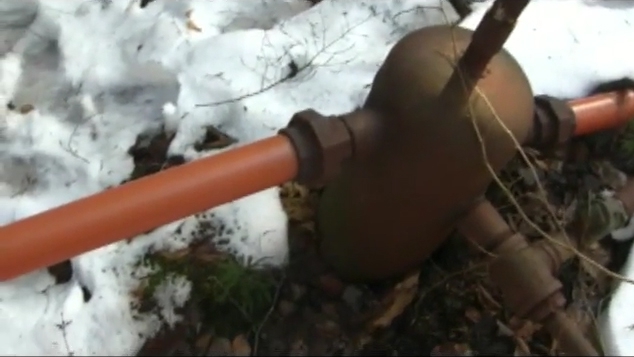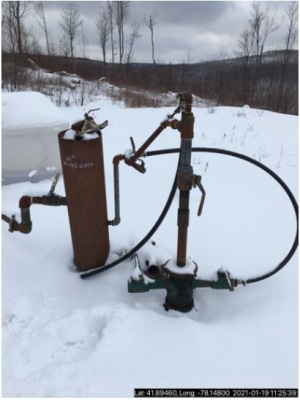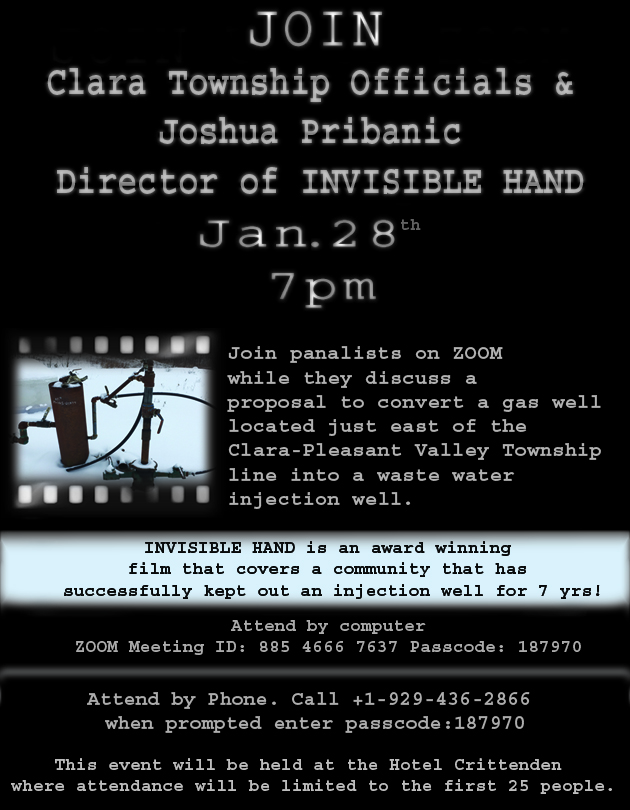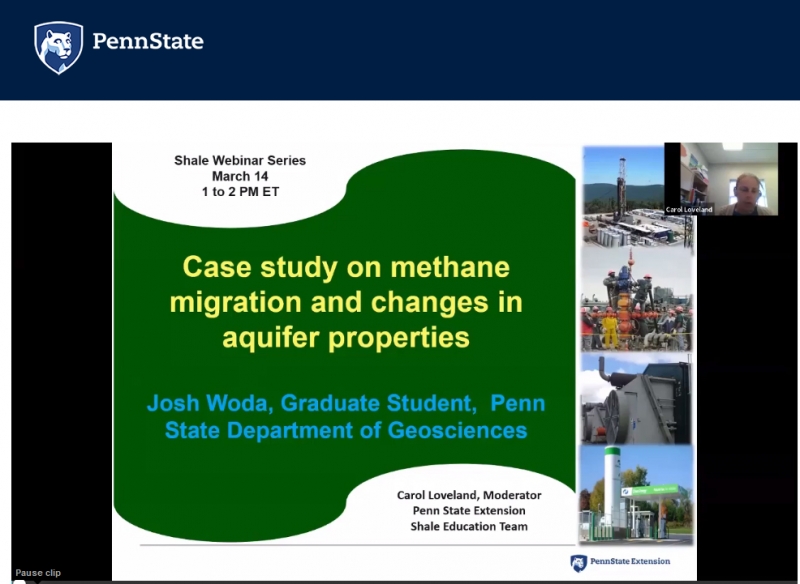What's So “Experimental”
About Epiphany's Tech Anyways?
Opinion Letter
By Georgeanna DeCarlo
In a presentation at a CAMA meeting last year, Thomas Joseph said his facility would use an experimental technology that he created to treat fracking wastewater. Until his DEP permit application was made available to the public, skeptics had little but Joseph's carefully chosen wordage to investigate his claim. And Epiphany's original DEP permit application probably got a cheer from Joseph's proponents because it probably looked a lot like they expected it to look.
But after Epiphany's permit was made available to the public and reviewed by scientists, doctors, engineers not affiliated with Epiphany or the gas and oil industry who tore the thing apart noting deficiencies, discrepancies and stating their objections during public commenting period – the bedraggled permit is causing the facility to look less like a magic machine and more like a – uh oh! - regular zero discharge fracking wastewater treatment facility. Maybe Rumple can't spin frack fluid and produce chemical free, non-toxic, non-radioactive water out of it after all.
So, did DEP hand Epiphany's permit back? Nope. They continued doing what they'd been doing for months- notifying Epiphany about what they needed to change to make their permit compliant. Epiphany's permit is still awaiting DEP approval.
Which brings up one of many great points that Allegheny Defense Project made in its 45-page comment regarding CAMA's Waterways and Wetlands Encroachment permit affiliated with Epiphany's to create the frack WWTF. “This cozy relationship that DEP has with the regulated community can be seen playing out in this case. For example, on December 20, 2017, David Shimmel, Chief of the New Source Review Section for the North Central Regional Office, sent an email to various DEP officials regarding a phone conference with Epiphany.46 According to Mr. Shimmel’s email, Epiphany “provided some very important clarifications on their project at [CAMA].”47 Those clarifications were as follows: • [Epiphany] will be processing ONLY produced fluids from producing wells. • [Epiphany] will NOT be processing frac fluid or flowback water. • [Epiphany] will be receiving produced fluids from one customer only: JKLM Energy • Reportedly, JKLM Energy does NOT use methanol for deicing or as a hydrate inhibitor. • [Epiphany] will use electric motor driven vapor recompression units, not natural gas-fired engines. • [Epiphany] will only need a 500 bbl/day throughput limit, not 1,000 bbl/day.48 Mr. Shimmel then explained that “[t]hese clarifications change our approach and it sets the table for exemption to be possible.”49 In other words, DEP was working with the applicant (i.e., its “client”) to find a way to exempt the project from certain permitting requirements. One day later, however, Mr. Shimmel sent a follow-up email stating that “JKLM could not guarantee there would be no frac fluid and flowback in the wastewater that Epiphany will receive” and that, as a result, “Epiphany recanted on the first four bullet items” identified above. This is a significant clarification. Nevertheless, Mr. Shimmel reiterated that DEP was still working with Epiphany to navigate the application process on “[t]he road to exemption[.]”50 It is not the role of a trustee to bend over backwards to find ways to exempt industrial activities from environmental regulation-” pg. 11 ADF comment to DEP https://drive.google.com/drive/folders/1xUxl1lAyj0-p9BWGjOkRlzg2llMwcNRz
In what resembled more of an Epiphany press release than news story, “Epiphany touts science of fracking plant to stakeholders,” By Bob Clark, Special to The (Salamanca) Press, Mar 27, 2018 Epiphany gives an update regarding their permit. “'We’ve been told we’ll have permitting in early May,” Broeker told the guests, adding the project should be receiving the necessary approvals from the state Department of Environmental Protection.'”
Really? Where's the follow up from Clark, the fact check with DEP? Again, very concise verbiage from Broeker here. These are guys that you have to listen to carefully, read the fine print, figure out what's between the lines and what isn't there at all. Not the kind of people I like doing business with but hey, I didn't pick them, CAMA did.
In Environmental Health News, “New York Tribe Takes On Pittsburgh Startup To Defend The Allegheny River,” Tom Joseph blamed opponents for holding up his permit but last I knew, correspondence between Epiphany and DEP showed that Epiphany hadn't responded with their resolutions to deficiencies noted in a DEP notification to them dated February 14, 2018.
Just what exactly is so experimental about Joseph's self-acclaimed unique tech?
“The facility, first proposed by JKLM and Epiphany in 2016, would deploy an experimental technology developed by Epiphany to treat wastewater from nearby fracking wells, discharging the treated water into the municipal sewage treatment plant which in turn discharges its effluent into the Allegheny River. -”https://news.littlesis.org/2018/04/04/pegula-backed-fracking-waste-firm-uses-racist-language-to-attack-opponents/
One of the explanations Joseph gave to stymie refunds and ward off threats of pursuing legal action against him years after his 3-month onEpuck kickstarter campaign ended was a plea for patience from his backers while he got his tech patented.
And, according to his website, tech for his on-site fracking well pad equipment is still waiting patent approval. “Epiphany's E5H is a well-pad based Produced Water treatment solution that is designed to meet the needs of the Oil & Gas industry, particularly hydro-fractured shale wells....Epiphany’s patent pending technology enables Oil & Gas operators to:” http://www.epiphanyws.com/produced-water/
Is Joseph's tech “new” because of its portable units and hybrid energy source? Although solar power is a clever strategy that I support and would love to see more widely implemented, maybe Epiphany encountered the same dilemma I faced when investigating solar power for my home: our area receives an annual daily average of about four hours of sunlight so in order to produce enough power consistently to run a household requires hefty additional support of very expensive charge holding units.
But wouldn't that have been one of the first factors that Epiphany considered before creating a partnership with CAMA? And were critical components of what Epiphany called its “new tech” lost after being revamped from being “portable” technology to a permanent base as a facility?
Joseph's remark in a recent interview paints a different picture than the concept of “new tech” that he presented at CAMA's meeting last year.
“What's different about Epiphany's proposal is the size of their water treatment technology, which is significantly smaller than Eureka's.
"'Henry Ford didn't invent automobiles; he just figured out how to mass produce them," Joseph said. "We've done that with distillation technology. We didn't invent it, but what we're proud of is that we miniaturized it so we can mass produce it at about 10 percent of cost anyone else can do it at.'" http://www.ehn.org/new-york-tribe-takes-on-pittsburgh-startup-to-defend-the-allegheny-river-2554105551.html
So if Epiphany's “new tech” all along has been nothing more than miniaturization of standard “zero discharge” desalination equipment already in use, then objections that Public Herald Investigative Reporter Joshua Pribanic raised at DEP's hearing in January against local long time water protectors for testifying in support of Epiphany, were well founded after all.
DEP just cited the Eureka facility in Williamsport on January 24 for “violation of effluent limits.”
JKLM announced that it's withdrawing from this project. Pribanic said that he was told by an Epiphany rep on Friday to expect an announcement Monday. CAMA slated a Special Meeting for Monday at 6:30.
I am grateful for all the people and officials who've stepped in and demanded a cautionary approach. I hope that plans for this facility end similar to the quest to learn the number of licks it takes to get to the tootsie roll center of a tootsie pop. That is, of course, before Purdue University created a “licking machine” and figured it out.









